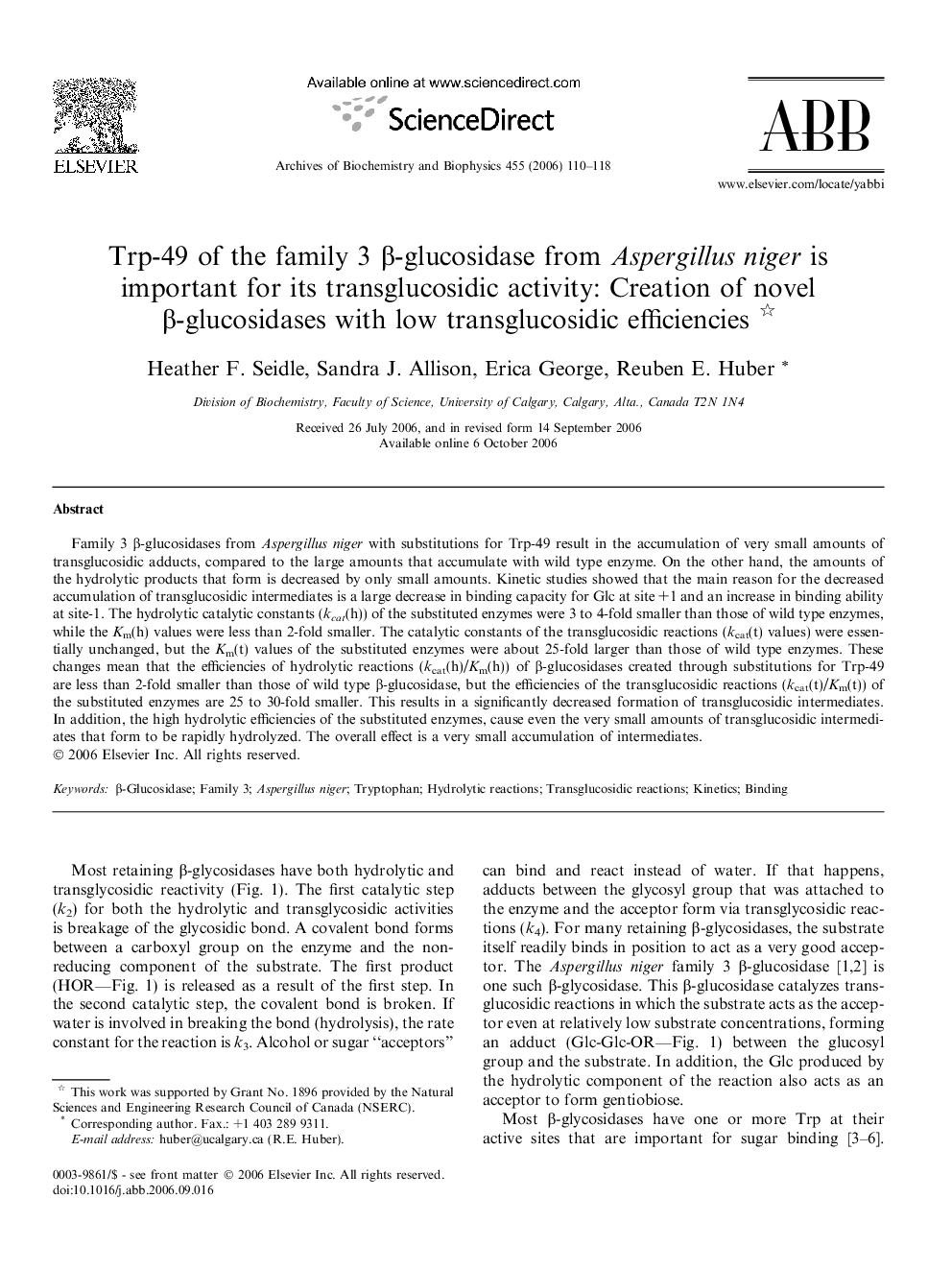| Article ID | Journal | Published Year | Pages | File Type |
|---|---|---|---|---|
| 1927335 | Archives of Biochemistry and Biophysics | 2006 | 9 Pages |
Family 3 β-glucosidases from Aspergillus niger with substitutions for Trp-49 result in the accumulation of very small amounts of transglucosidic adducts, compared to the large amounts that accumulate with wild type enzyme. On the other hand, the amounts of the hydrolytic products that form is decreased by only small amounts. Kinetic studies showed that the main reason for the decreased accumulation of transglucosidic intermediates is a large decrease in binding capacity for Glc at site +1 and an increase in binding ability at site-1. The hydrolytic catalytic constants (kcat(h)) of the substituted enzymes were 3 to 4-fold smaller than those of wild type enzymes, while the Km(h) values were less than 2-fold smaller. The catalytic constants of the transglucosidic reactions (kcat(t) values) were essentially unchanged, but the Km(t) values of the substituted enzymes were about 25-fold larger than those of wild type enzymes. These changes mean that the efficiencies of hydrolytic reactions (kcat(h)/Km(h)) of β-glucosidases created through substitutions for Trp-49 are less than 2-fold smaller than those of wild type β-glucosidase, but the efficiencies of the transglucosidic reactions (kcat(t)/Km(t)) of the substituted enzymes are 25 to 30-fold smaller. This results in a significantly decreased formation of transglucosidic intermediates. In addition, the high hydrolytic efficiencies of the substituted enzymes, cause even the very small amounts of transglucosidic intermediates that form to be rapidly hydrolyzed. The overall effect is a very small accumulation of intermediates.
